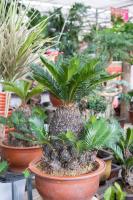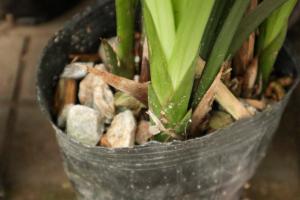What to put under plant pot
When it comes to indoor gardening, choosing the right plant container is important. Equally important is what you put under the plant pot. So, what should you put under your plant pot? Here are some options:
1. Saucers
Saucers are the most commonly used option for plant pot drainage. They come in a variety of sizes and shapes and are typically made of plastic or ceramic. Saucers prevent excess water from leaking onto the floor and provide a reservoir for the plant to draw from when it needs moisture. They are inexpensive, readily available, and easy to use.
2. Pebbles or Gravel
Another option for plant pot drainage is to put a layer of pebbles or gravel at the bottom of the pot. This will help to improve drainage by creating space for excess water to flow away from the plant roots. It will also help to prevent soil from washing out of the pot when you water your plant. However, keep in mind that pebbles and gravel can be heavy and cumbersome to handle, and they can add weight to the pot, making it more difficult to move.
3. Coco Coir
Coco coir is an eco-friendly, sustainable alternative to traditional potting soil. Made from coconut husks, it is a natural, lightweight, and nutrient-rich option that can be used as a substrate for indoor plants. It is also biodegradable and can be composted after use, making it an excellent choice for eco-conscious gardeners. Coco coir can help to improve drainage and aeration, as well as retain moisture for your plants.
4. Vermiculite or Perlite
Vermiculite and perlite are two non-toxic, lightweight materials that can be used to improve drainage in indoor plant pots. They both have the ability to absorb and hold moisture, which can help to keep your plants hydrated. They also help to create space in the soil for air to circulate around the roots, which can prevent root rot and other soil-borne diseases. Keep in mind that these materials can be dusty and may need to be washed before use.
5. Paper Towels or Coffee Filters
If you need a quick fix for a pot with no saucer, you can use a paper towel or coffee filter under the pot to absorb excess water. This is an easy and inexpensive solution, but it's not ideal for long-term use. The paper towel or coffee filter will eventually break down and may not provide adequate drainage for your plant in the long run. Use this option sparingly and only for short periods of time.
When it comes to what to put under your plant pot, there are several options to choose from. Consider what will work best for your plant and your specific indoor gardening needs. Whether you choose saucers, pebbles, coco coir, vermiculite, perlite, or something else, make sure to provide adequate drainage and airflow to keep your plants healthy and thriving.

 how many times do yo...
how many times do yo... how many planted tre...
how many planted tre... how many pine trees ...
how many pine trees ... how many pecan trees...
how many pecan trees... how many plants comp...
how many plants comp... how many plants can ...
how many plants can ... how many plants and ...
how many plants and ... how many pepper plan...
how many pepper plan...
































